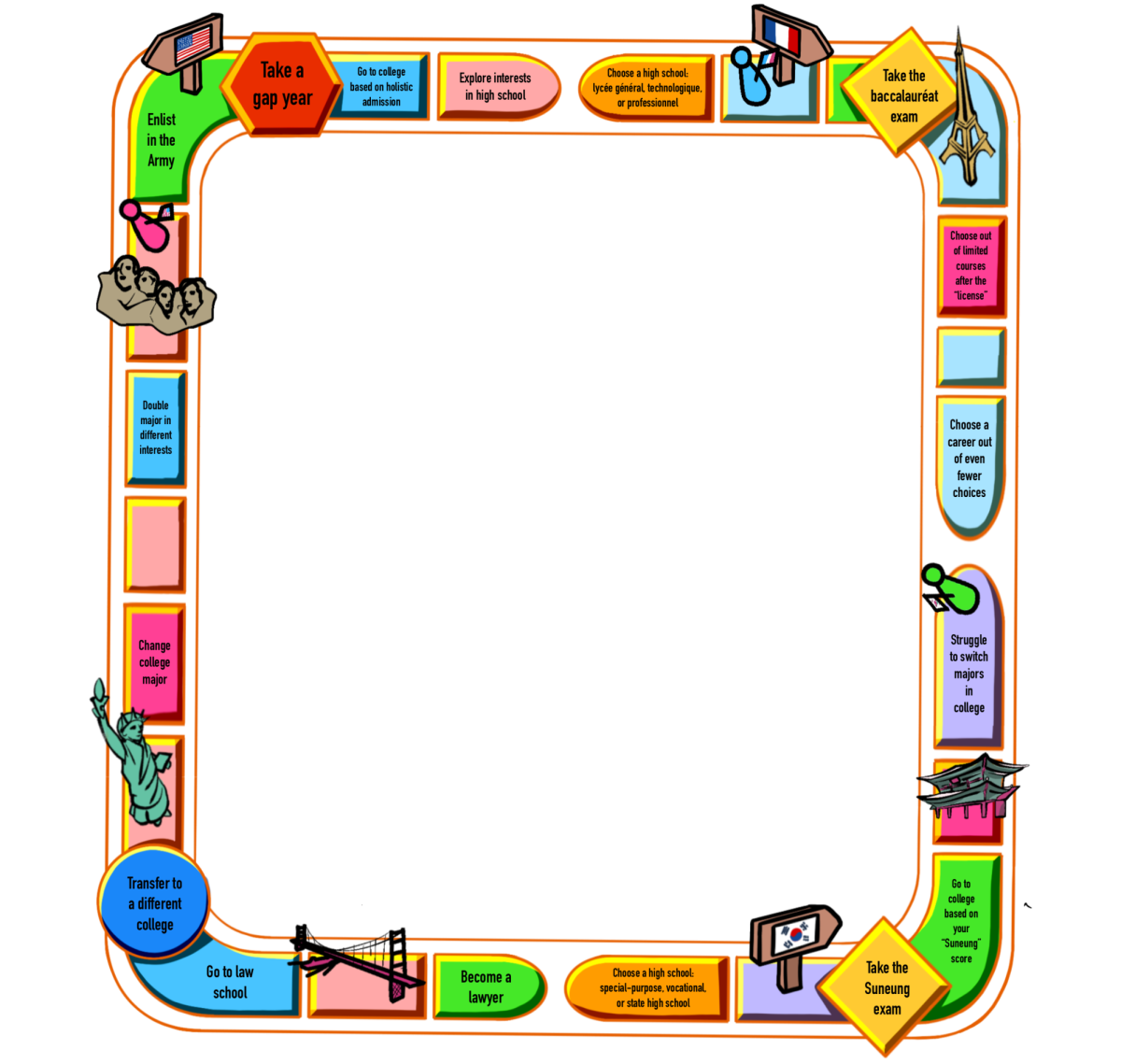Written by: Tim Wang and Katherine Zu
Pro:
Palo Alto High School’s (Paly) block schedule differentiates from Gunn’s rotating schedule in that students take fewer classes or periods per day and instead spend a significantly longer time in each period. Gunn and the Palo Alto Unified School District (PAUSD) have already undergone significant changes this year by shifting the school year. However, Gunn should consider adopting a block schedule, as it has been shown to help both teachers and students perform to the best of their abilities.
Block schedules often offer a significant logistical advantage for both teachers and students. According to Principal Katya Villalobos, a teacher in a block schedule often needs to prepare for fewer sessions each day and can focus his or her time on the classes he or she will teach that day. This leads to time being used more productively and greater success in individual classes. Also, because classes meet less often, tests and homework assignments are often much easier to handle. This helps students reduce the stress of their workload and the alleviation allows them to focus on their immediate classes each day and utilize their time more efficiently when trying to get things done.
Science and history classes especially benefit from the block schedule. Science classes get more time to complete complicated labs in one sitting, letting them cover more material while using less time each day for review purposes. Right now history classes struggle to fit in large simulations, with most of the class time dominated by lectures with a few group discussions and projects thrown in occasionally. A block schedule gives history classes the opportunity to incorporate such simulations and projects, allowing them to be much more interactive. In addition, interactive activities have already been shown to significantly improve academic ratings as opposed to a normal lecture in a study done by Carl Wieman in 2001.
Furthermore, the average class size has been shown to drop when a block schedule is in use. According to the Palo Alto Weekly Paly has a average class size of 28.5 while compared to Gunn’s average class size of 30. A smaller classes has been proven, through previous studies such as one done by Tennessee’s Project Star, to increase achievement by a significant amount. A smaller class size allows teachers to devote more of their time to individual students, helping to increase student success rates. The increased time that is allowed per period thus also allows for a closer bond between student and teacher and helps make the class more enjoyable for both parties.
The current schedule provides many benefits, but it still does not accommodate all of Gunn’s needs. According to Paly’s principal Phil Winston, Paly has been having great success with their own block schedule ever since they adopted it, as it allowed them to have increased staff collaboration and student support. A block schedule is one such schedule that could improve efficiency and promote academic excellence at Gunn, and the Gunn community should seriously consider utilizing it.
Con:
High schoolers at Gunn and Palo Alto High School (Paly) benefit from similar course offerings, opportunities and school programs. However, one main discrepancy lies in the daily schedule. Those at Gunn are on a rotating schedule, while those at Paly are on an alternating A/B block schedule. Under this schedule, students at Paly sit through all seven classes on Monday. For the rest of the week, three to four 90-minute classes occur each day. Because of elements such as shorter class periods, greater class frequency and less severe consequences of missing class, Gunn’s rotating schedule is better for students than Paly’s block schedule.
Paly’s longer class periods negatively affect the students. Sitting through an hour long lecture is hard enough. According to the George Lucas Educational Foundation, teenagers have an attention span of roughly 20 minutes. Although students at both schools might spend some of the period daydreaming and out of concentration towards the end of the period, students on the block schedule will be less focused for a larger percentage of the instructional duration. More time spent in class does not necessarily equate to a proportional increase in learning. To make up for this shortcoming, the burden is put on the teachers to keep the class engaged. Assistant Principal Kimberly Cowell noted that filling a 90-minute period that truly engages students for the full time requires that there be several activities and transitions, and that 90-minute lectures are not optimal for high school students. A switch to the block schedule will require Gunn teachers to readapt their teaching style and curriculum.
Gunn’s rotating schedule also offers more meetings between teachers and students. Some classes particularly benefit from the daily practice and reinforcement that the rotating schedule emphasizes. Subjects like music and foreign language gain from reviewing the material daily. According to Professor Stephen D. Krashen, a study found that those who were exposed to the foreign language more have increased language proficiency. The block schedule decreases foreign language exposure because classes meet less often. On this aspect, the rotating schedule trumps the block schedule because classes meet more often on the rotating schedule.
In addition, the block schedule increases the negative effects of missing class. If a Paly student is absent for a period, they will miss 30 minutes more than a Gunn student. Also, those who miss a block day will miss a considerable amount of material in those classes, particularly when those classes go at a quick pace and cover a significant amount of new material. Although students missing a class at either school miss roughly six hours of instruction, the consequences of missing class at Paly are more severe. Those missing a class at Paly would miss an additional half hour of class. Also, at Gunn, when one misses a science lab, there is a only one hour to make up for. However, at Paly, one must make up a 90-minute lab.
Due to shorter and more frequent class periods, Gunn’s rotating schedule is superior to Paly’s block schedule. Students have already adjusted to a rotating schedule that has no evident negative consequences.











